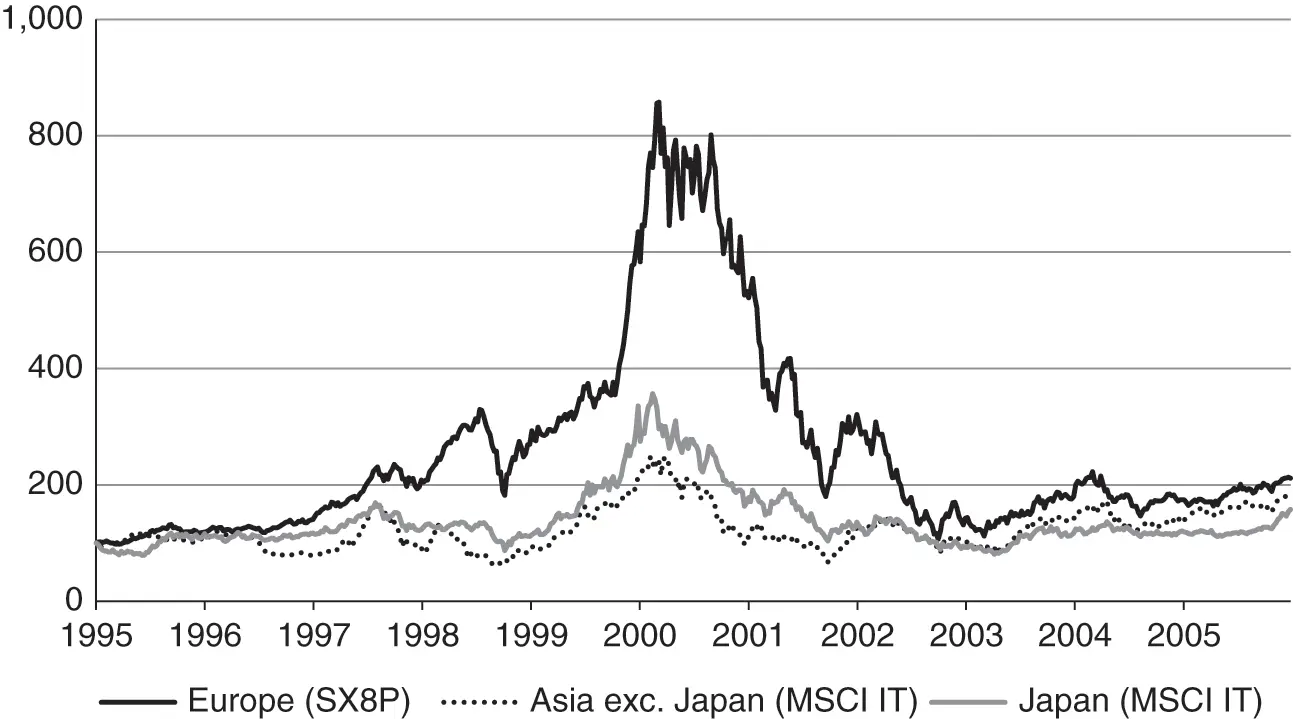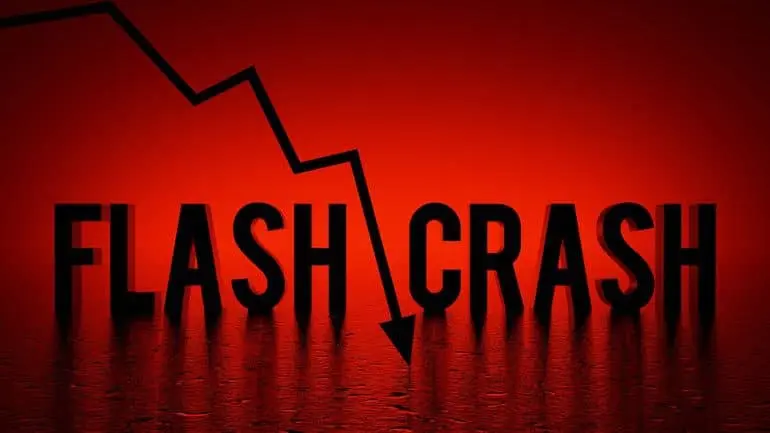Flash crashes have long become an essential part of the crypto market. So far, their frequency has made them a part and parcel of trading. However, this notion traces back to the very emergence of the market. And still, the roots behind flash crashes remain so obscure that they keep coming in new, undiscovered patterns. But what if I told you that the impossibility of predicting is the core reason for flash crashes? And at the same time – their Achilles’ heel?
Today’s article is diving into a collapsing flinch of market turmoil and one of the scariest investing terms – but only to debunk it. With help from RunnerXBT, a seasoned crypto analyst, we are discovering how to always think before the unthinkable and remain resilient against momentum threats.
Unfolding the Flash Crashes
Putting it simply, flash crashes stand for swift dips in crypto prices that occur unexpectedly over a short timeframe and are characterized by large volumes. While there is a range of technical drivers for market crashes – from thin liquidity to sharp supply/demand disbalance, there are market panics that often amplify the situation.
When prices begin to drop rapidly, traders (or even algorithms) may rush to exit their positions, causing further downward pressure. This cascading effect can escalate a minor issue into a full-blown crash. And while the market often recovers quickly, the financial and emotional damage can linger long after the charts have stabilized.
The global economy has been experiencing flash crashes at least since the early modern era. The first recorded turmoil took place in 1637, when the Dutch tulip market collapsed in a blink of an eye, following the staggering mania. The tendency held such a historical effect that eventually turned into saying, metaphorically describing large economic bubbles – tulipmania.
Read Also: Crypto Payments: What Can You Purchase with Cryptocurrency Today?
The markets changed – but the risks of flash crashes never vanished. The abrupt dumps keep taking place almost every month, especially in high-risk markets, like crypto.
“An easy example can be August 5, 2024, when Bitcoin dumped to $48,000 as a result of a surprising Bank of Japan rate hike,” said RunnerXBT. “Markets collapsed overnight, VIX (Chicago Board Options Exchange’s volatility index – author’s note) skyrocketed to the highest values in decades (excluding Covid crash), and all markets just plummeted down like crazy”.
Notably, flash crashes are also followed by technical malfunctions. The latest case occurred to OKX’s native OKB token, as an unexpected liquidation cascade plummeted its price by 50%.
A similar situation affected BitMEX crypto exchanges a couple of months before. On the exchange, bitcoin (BTC) suffered a brief crash to $8,900 as the coin was genuinely priced at $60,000. Clearly, flash crashes also apply to moderately lower assets in terms of market capitalization. Case in point: Toncoin (TON) hit a 4-month low after its founder Pavel Durov’s arrest.
Significantly, the long-standing nature of flash crashes does not make one predictable. The silver lining is: that this does not make them unavoidable. Understanding the reasons behind the market crisis is already a fair share of precaution against it.
Gladly, the awareness about flash crashes and other market volatility outcomes is growing. Every flash crash is being profoundly scrutinized – all by experts, media, and enthusiasts. Meanwhile, the largest crypto exchanges, like Binance, WhiteBIT, or Bybit, are raising awareness about flash crashes in an elaborate, gaming form.
Black Swan Theory As Full Explanation of Flash Crashes
When it comes to unfolding the reasons behind flash crashes, the Black Swan theory comes as a clue. This very framework of a rapid-emerging crisis with a vast magnitude is actually a full-fledged explanation of flash crashes as a phenomenon.
As a metaphoric term, black swan traces back to a common Latin saying, presumed that black swans did not exist. The expression was used until around 1697 when Dutch mariners saw them in Australia. After this, the term was reinterpreted to mean an unforeseen and consequential event.
The foregone metaphor later sought its second life in the works of Nassim Nicholas Taleb – a finance professor, writer, and former Wall Street trader. The idea of black swan first appeared in his 2007 book prior to the events of the 2008 financial crisis. Taleb argued that while black swan events are impossible to predict and almost unlikely, they are to be assumed a constant likeability – all to avoid catastrophic consequences.
In 2008, Taleb went on with unfolding black swan events upon the year’s Great Recession. He argued that if a broken system is allowed to fail, it strengthens it against the catastrophe of future black swan events, while a system that is propped up and insulated from risk ultimately becomes more vulnerable to catastrophic loss in the face of rare, unpredictable events.
However, the rarity and catastrophism are still not the hallmarks of black swan events. What defines them is a strong belief such events can be predicted. More importantly, this belief is brought up only after the very black swan event already happened.
As the aforementioned crisis of 2008 had already taken place, many came up with the possible catalysts of it. But prior to it, no one could even assume the Lehman Brothers collapse. While the 2008 Great Recession was not the last black swan to take place, it by far was not the first.
Black Swan theory is mostly associated with the infamous 2000 Dot-Com (.com) collapse. Also known as the Internet bubble, it occurred amidst this profound technology’s dizzying adoption – so dizzying than always unmonitored.
As the shift to the Information Age has been kicking in, the market was piling up with fast-sprouting internet-oriented companies. Speculative capital began rapidly flowing to newly-founded enterprises, elevating the Nasdaq index 400% from 1995 to 2000.
A smooth sailing was interrupted by U.S. plans to hike interest rates in 2000 and Japan entering a recession this year. All things combined hit one of the most popular internet companies of the day, Pets.com, which went up to the wall under the pressure of macroeconomic instability.
Read Also: Top Most Secure Crypto Exchanges: Insights From the 2024 Hacken Report

The “Dot-Com” bubble market timeline. Credit: “Boom and Bust” by William Quinn and John D. Turner
This broke out the chain of selling, as investors overlooked their confidence in internet-based products and companies. As the Nasdaq index kept on dropping week after week, the September 11 terrorist attacks in 2001 accelerated the sell-off in dot-com companies even further. At its bottom, the Nasdaq index lost a whopping 78% from its peak, marking the end of this black swan phenomenon.
Upon the dot-com bubble, it becomes clear to trace the three key points, defining a black swan event:
- Black swan event is so rare that even the possibility that it might occur is unknown
- Such an event has a catastrophic impact, which echoes years after it had taken place.
- The black swan event is explained in hindsight as if it was predictable.
The same framework applies to the Great Depression as well – a 1929 event, which not only caused a worldwide decline in stock prices but altered the ongoing global financial politics approach. In the last decade, black swans were “spotted” amidst the 2020 lockdowns and the 2015 scrap of the Swiss franc (CHF) peg.
Crypto markets have survived black swan events as well. One of the most notorious ones are collapse of Mt.Gox and FTX cryptocurrency exchanges. The latter one even turned the vector of government policies to intensively coining elaborate legal frameworks for cryptocurrency regulation. However, the most iconic black swan event, which indicated flash crashes both as a reason and a consequence is Terra Luna’s collapse.
Throughout the pre-collapse period, UST – Terra Luna protocol’s stablecoin – crashed at least twice, and the latest dump swept off 96% (!) of the token’s price. All of this – due to protocol and capital machinations.
How to Withstand Flash Crashes
Indeed, the flash crashes are impossible to predict. But there are signs when their possibility is at its highest. Thin liquidity, especially in off-peak trading hours, is one of the sights that hints at the risk of sharp price drops. However, it is important to note that this signal does not necessarily mean an upcoming flash crash. And at the same time, this does not make a stable market a predefined smooth sailing. The risks remain.
Gladly, your risks at the market are something a trader can control or, at the very least, mitigate. Hence, it is all about being prepared. Stop-loss orders are one of the tools that might come in handy. Setting a predetermined price point at which an asset will be sold, may help limit the losses during rapid market downturns.
Seeing the emotion-driven nature of the abrupt market collapse, it is necessary to remain resilient to every panic. Sticking to a well-constructed risk management plan and relying on automated tools can provide the discipline needed to navigate even the most unpredictable market conditions. Still, as flash crashes can’t be predicted in advance, RunnerXBT believes that they are the best times to seize the opportunity.
“I think flash crashes are some of the best profit opportunities ever,” believes the analyst. “One should always have margin (capital) available to keep buying. It’s damage control only for the overleveraged”.
Bringing up the aforementioned August 5 crypto market turmoil, it becomes clear that those who managed to surf the flash crash and purchase Bitcoin below $50,000 are now in profit.
“Paired with massive deleveraging in crypto markets, I was confident that buying Bitcoin below $50,000 BTC was a steal – and it was,” reminisces RunnerXBT. “These extreme panic scenarios, sadly including war escalations, are often some of the best buying opportunities. This is a time when a trader/investor should be in a position to take a position”.
However, in the end, there is always mentality which plays a pivotal role. Don’t let flash crashes crash your dedication, because there is always a new, more advanced trade afterwards.
“We are all human. If you feel horrible in your gut and physically and mentally unwell, others can feel it too. With experience, one can handle these a lot better than others”.
Read Also: Ripple Lawsuit Progresses in California as Judge Rules on Key Expert Testimonies

